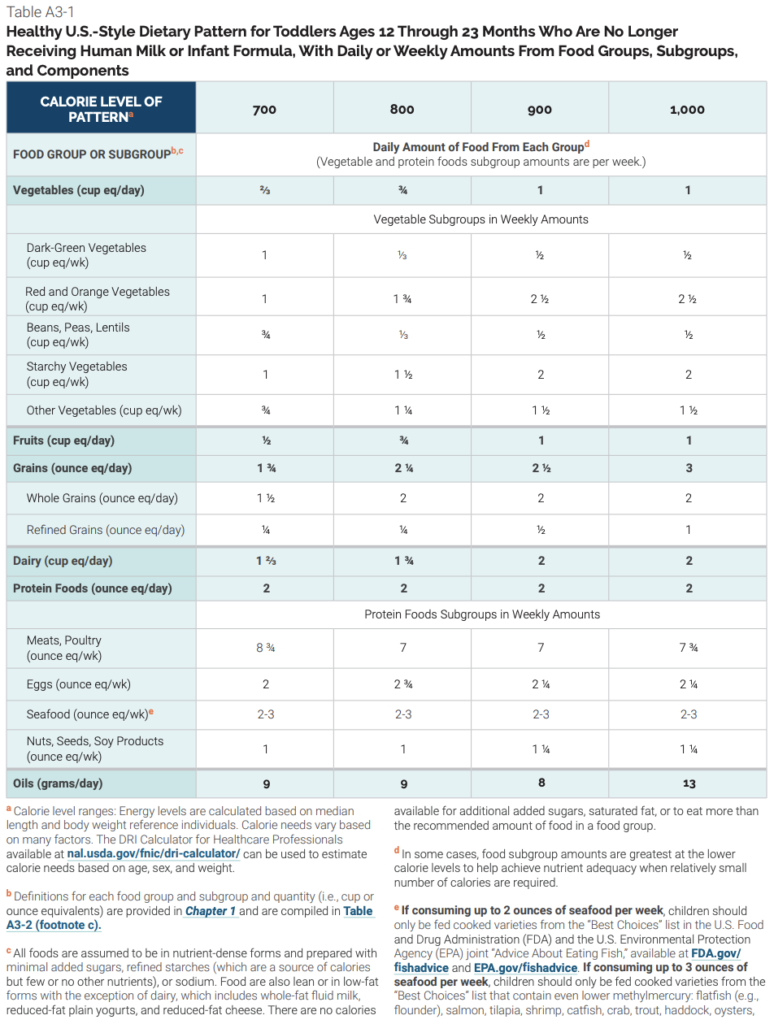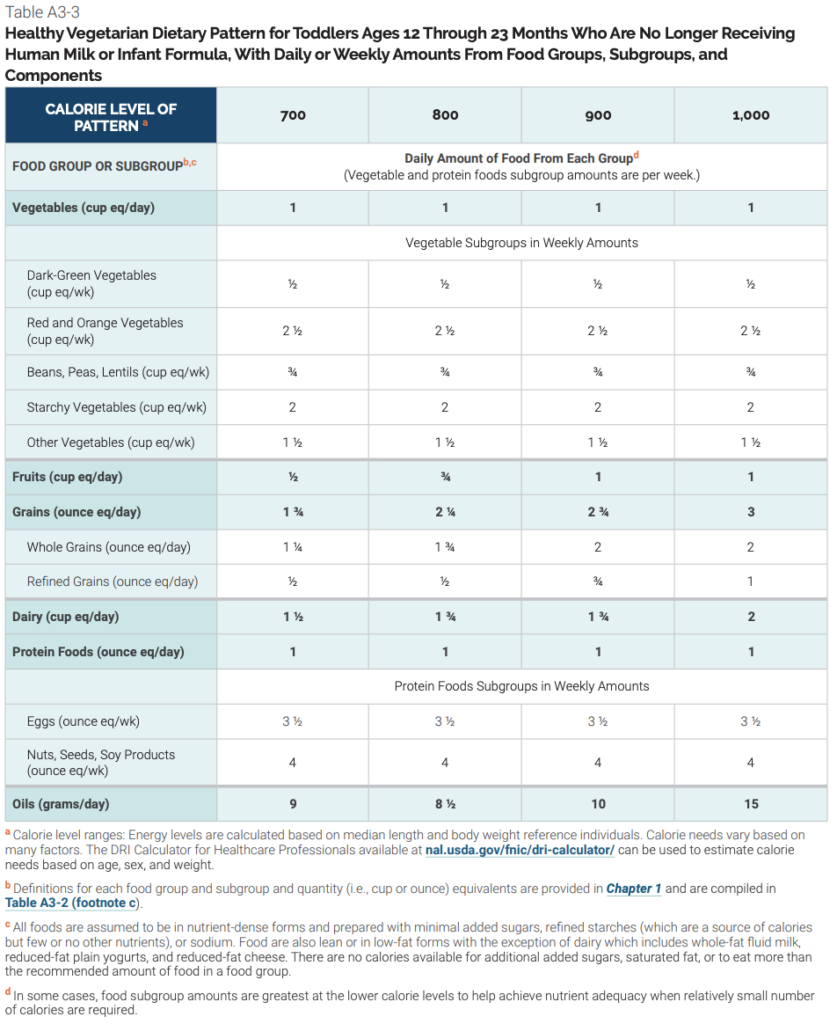The 2020-2025 Dietary Guidelines for Americans (DGA) says “it’s important to make every bite count” when it comes to feeding infants and toddlers. This is the first time in Dietary Guidelines history that recommendations for the Birth to 24-month lifestage have been made. DGA indicates “…complementary foods and beverages are essential to meet the nutrient requirements of infants starting at about age 6 months and should be selected carefully to help meet these needs.”
The DGA specifically recommends eggs as an important first food for infants and toddlers as they are a rich source of nutrients like choline and because early introduction (after 4 months of age), when baby is developmentally ready, may help reduce the risk of developing an allergy to eggs.
The following breaks down DGA recommendations based on age group.
BIRTH TO 6 MONTHS
For approximately the first 6 months of age, human milk, infant formula, or a combination of the two are an infant’s sole source of nutrition. Once developmentally ready (>4 months of age) – baby has good head and neck control, can sit upright, has lost the tongue-thrust reflex, and shows interest in food – complementary foods can be introduced.
6-12 MONTHS
During the 6-12 month period, an infant continues to receive human milk, infant formula, or a combination of the two, and also starts transitioning to a varied diet that includes complementary foods and beverages. This is where nutrient-rich foods with essential nutrients for growth and development come into play.
For infants fed human milk, the DGA recommends complementary foods that contain iron and zinc, such as meats, seafood, beans, and fortified infant cereals. For all infants, DGA recommends offering a variety of foods from all food groups starting around 6 months. Protein foods, including meat, poultry, eggs, seafood, nuts, seeds, and soy products contribute iron, zinc, protein, choline, and long chain polyunsaturated fatty acids to the diet. Fruits and vegetables, particularly those rich in potassium, vitamin A, and vitamin C, should be offered to help provide adequate nutrition and foster acceptance of these healthy foods. Yogurt, cheese, and grains also provide important nutrients starting around 6 months.
During this time, age-appropriate peanut-containing foods and other potentially allergenic foods like eggs should be introduced, to help reduce the risk of developing allergies to these foods. Additionally, introducing baby to complementary foods like eggs, which are high in choline, supports brain health.2,3 It should also be noted that complementary feeding not only provides additional nutrients, but introduces different textures, and models healthy eating behaviors, as well.
12-24 MONTHS
As baby moves past the 12-month mark and into the second year of life, many move away from human milk and infant formula entirely and transition to a fully varied diet of nutrient-rich foods and beverages. Others may choose to continue offering human milk in addition to a varied diet of nutrient-rich foods and beverages. Either way, careful choices of foods should be selected to meet nutrient needs. The DGA emphasizes offering developmentally appropriate forms of nutrient-rich animal-source foods, including meat, poultry, seafood, eggs, and dairy products, as well as nut and seed containing foods, fruits, vegetables, and grain products in age-appropriate forms. For toddlers whose diets do not include meat, poultry, or seafood, the DGA recommends ”…regular consumption of eggs, dairy products, soy products, and nuts or seeds, in addition to vegetables including beans, peas, and lentils, fruits, grains, and oils.” The tables below outline approximate amounts of foods and beverages for toddlers between the ages of 12 to 24 months, for those not receiving human milk or infant formula and for those following a vegetarian style eating pattern.


EGGS AS A FIRST FOOD FOR INFANTS AND TODDLERS
Eggs are recommended after four months and when baby is developmentally ready for complementary foods, and throughout infancy and toddlerhood.
- Eggs are a nutrient-rich choice providing a good or excellent source of eight essential nutrients.
- Eggs provide various amounts of all the nutrients listed by the American Academy of Pediatrics4 as essential for brain growth.
- Introducing eggs early and often may help reduce risk of developing an egg allergy.
- Eggs are an affordable source of high-quality protein.
- Eggs are versatile and can be used to make a wide variety of dishes and can be adjusted to fit various developmental stages and age-appropriate textures.
Interested in more information?
Check out these recipes for infants and toddlers:
References
- U.S. Department of Health and Human Services and U.S. Department of Agriculture. 2020 – 2025 Dietary Guidelines for Americans. 9th Edition. December 2020. Available from: https://www.dietaryguidelines.gov/sites/default/files/2020-12/Dietary_Guidelines_for_Americans_2020-2025.pdf
- Wallace, T.C., A Comprehensive Review of Eggs, Choline, and Lutein on Cognition Across the Life-span. J Am Coll Nutr, 2018. 37(4): p. 269-285.
- Wallace, T.C., et al., Choline: The Underconsumed and Underappreciated Essential Nutrient. Nutr Today, 2018. 53(6): p. 240-253.
- Schwarzenberg, S.J., et al., Advocacy for Improving Nutrition in the First 1000 Days to Support Childhood Development and Adult Health. Pediatrics, 2018. 141(2)

